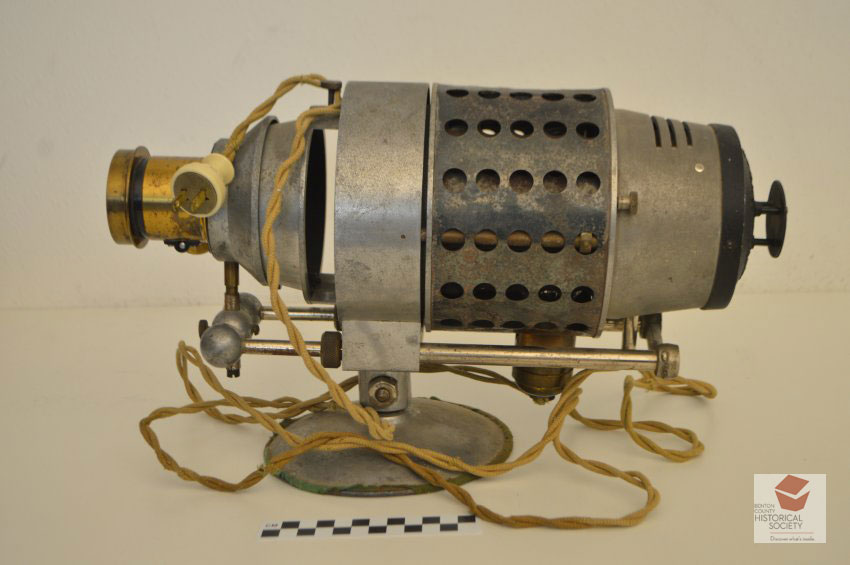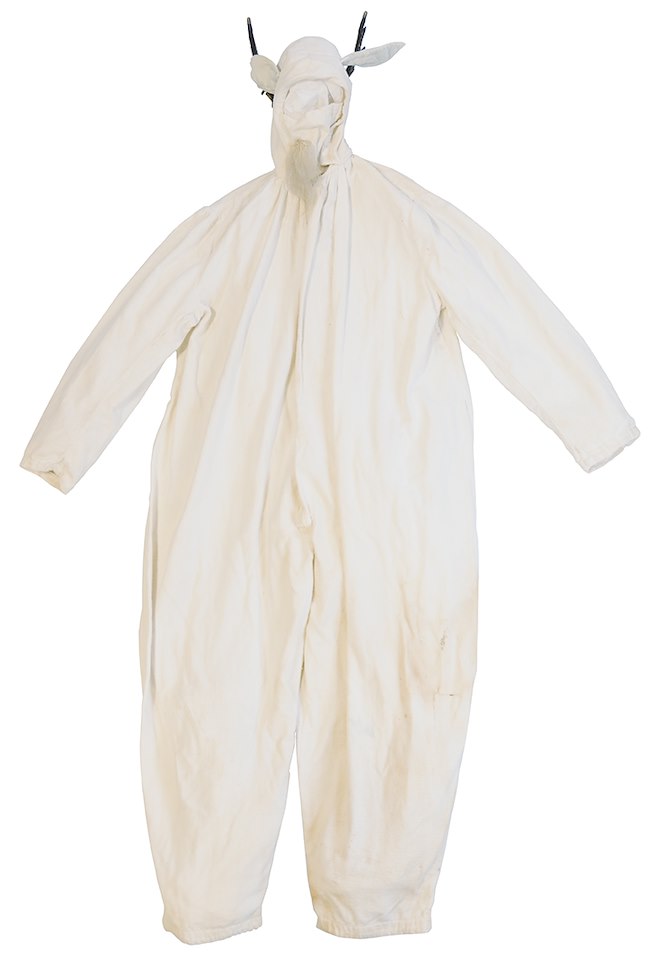A visitor to our Johnson Collections Center saw the object in the photograph on the shelf and asked me “What is that?”

I didn’t know at the time, but later learned that is a slide projector for glass slides.
In 1850, William and Frederick Langenheim patented a process for printing a negative onto a glass plate coated with a silver gelatin emulsion. This allowed them to make many copies of a individual photograph. A second piece of glass or a coating of shellac protected the image. The company made many sets of slides on various topics which were sold to schools, public speakers, and even individual families.
The projectors to show such slides were often called “magic lanterns.” Alexander Victor designed this one to be a simple-to-use machine that could show glass slides anywhere, not just in theaters but also in schools and homes. The user would put the slide in a holder (not shown) and insert it in the slit just in front of the wide band near the front. Then the user moved the lens back and forth along the rods near the bottom in order to focus the image. Alexander Victor established the Victor Animatograph Corporation in Davenport, Iowa, in 1910 to produce these machines. This one was made sometime between 1914 and 1929.
Alexander Victor also began producing a line of less expensive “featherweight” slides that were still durable and of high quality. He went on to design equipment for the motion picture industry.



